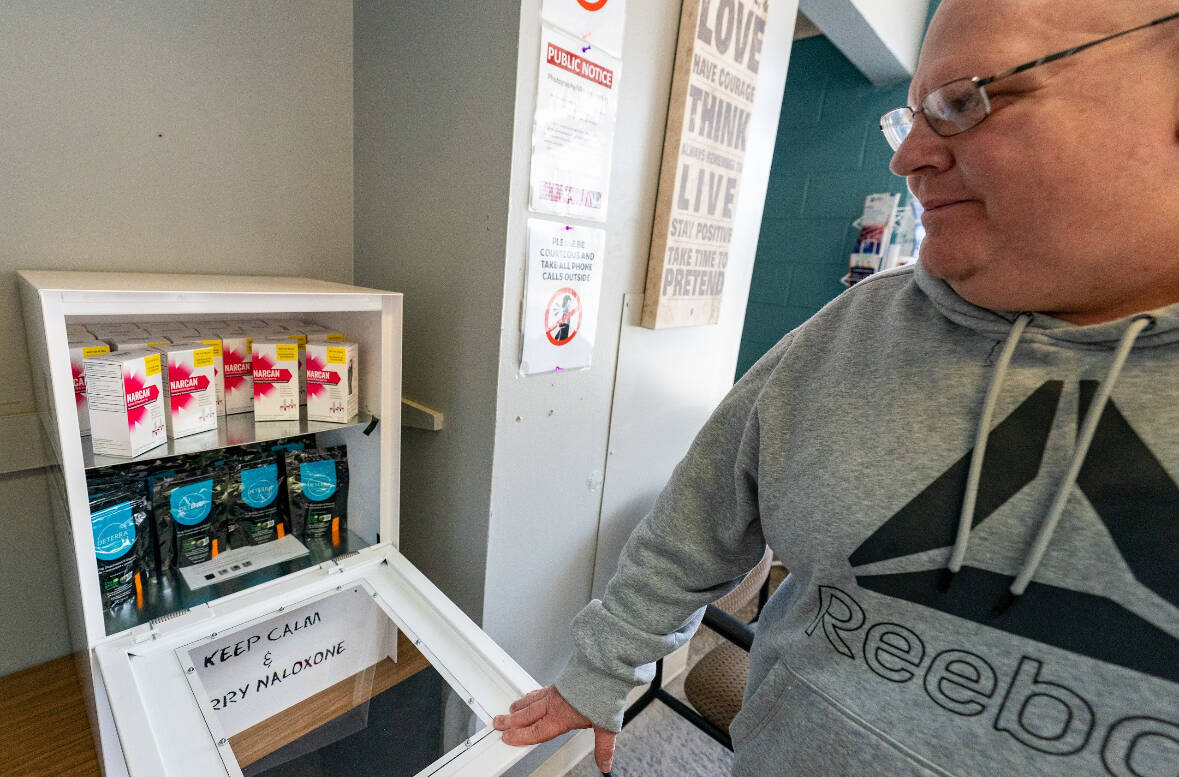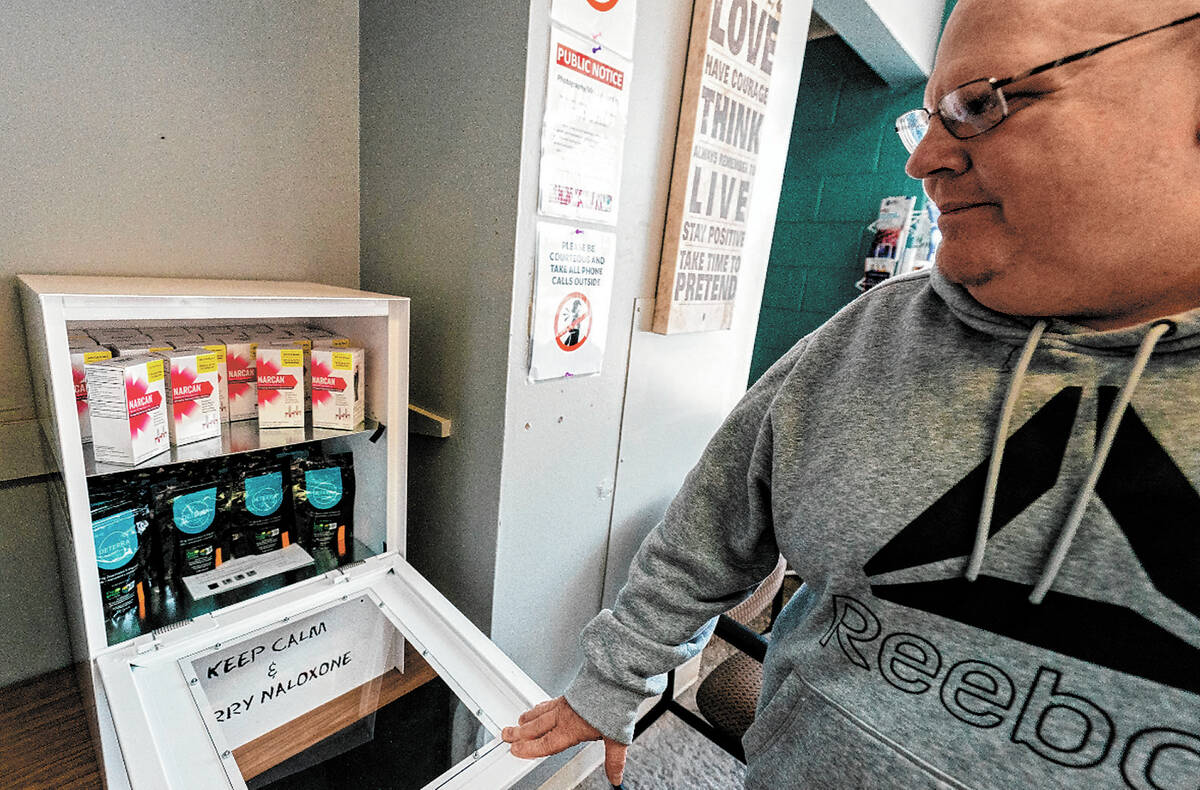Community Narcan dispensers saving lives
More than 80,000 people died in 2021 of an opioid overdose nationwide, according to the Centers for Disease Control, including prescription opioids, heroin and synthetic opioids such as fentanyl. To help counter this trend, Michael Quattrocchi, grant manager at NyECC, and his team have placed four Naloxone dispensers, which look like newspaper vending machines, in Nye County over the past five months.
Naloxone quickly reverses an overdose by blocking the effects of opioids. It can restore normal breathing within two to three minutes in a person whose breath has slowed, or even stopped, as a result of opioid overdose, according to the CDC. More than one dose of Naloxone may be required when stronger opioids like fentanyl are involved.
Located at the NyECC in Pahrump and Tonopah, the Nevada Outreach in Pahrump and the Living Free Cafe offices, these dispensers also contain Deterra medication disposal bags.
“We want it to get it into the hands of people that [have] chronic pain…or might just be getting pain medication for a simple illness, and we want it available for their family members,” Quattrocchi said.
More dispensers coming
In addition to a fifth dispenser going into to the Senior Center in Pahrump soon, Quattrocchi is looking to place vending machines in two medical offices that also carry fentanyl and Xylazine test strips, condoms and pregnancy tests, as well as Naloxone and Deterra bags, with access to the contents controlled.
Quattrocchi says he’s replenishing about 80 to 100 Naloxone boxes each month. Each box contains two doses of Naloxone. “When I get the fifth one placed, I’m assuming it will go up,” he said.
But not everyone believes that the Naloxone is getting into the right hands to save lives.
Ed Bikle, operations manager at Living Free, says he sees the majority of Naloxone taken by the same two groups of people.
“They’re grabbing three, four, five at a time and they rotate in weeks. They’re all users,” he said. “Normal people that aren’t using are going to grab a few, give them to a few people in the family, and have them on hand.”
The difficulty for Bilke is none of these folks are asking for help, and often times bring in their young kids.
Quattrocchi is aware this is happening but believes it’s important to get the life-saving product dispensed to the community.
“The more Naloxone we get into the community, the more lives we’re going to save, the better chance people have of eventually recovering,” said Quattrocchi, who reported that a user goes through recovery treatment up to five or six times before they successfully stop using.
“If they die, they’re not going to make it there,” he said. “It might not mean that much to us, but those people have family members that are rooting for them, so we’re rooting for them too.”
Prior to the dispensers, Quattrocchi and his team have given out Naloxone and training free of charge at Homeless Wraparound events and to several local organizations.
A local casino reportedly saved an overdosing person two days after staff received their training and Naloxone doses.
“The EMS had told the security staff at the local casino that they would have died if they wouldn’t have used the Naloxone,” Quattrocchi said.
Quattrocchi also has Naloxone wall-mounted units, other than the dispensers and vending machines. He would like to see more units and training locally.
“The more we can get out in the community, the ways we can get it out in the community, the more hands it’s going to get into, the bigger difference it’s going to make,” he said.
John Clausen is a freelance journalist in Pahrump.


















